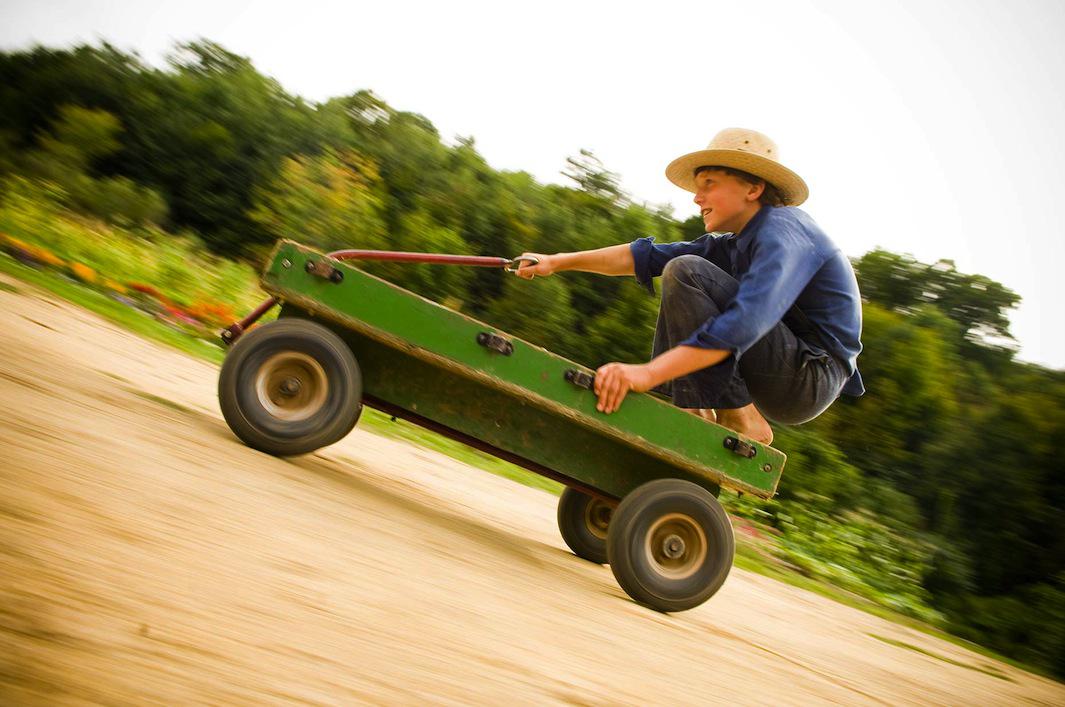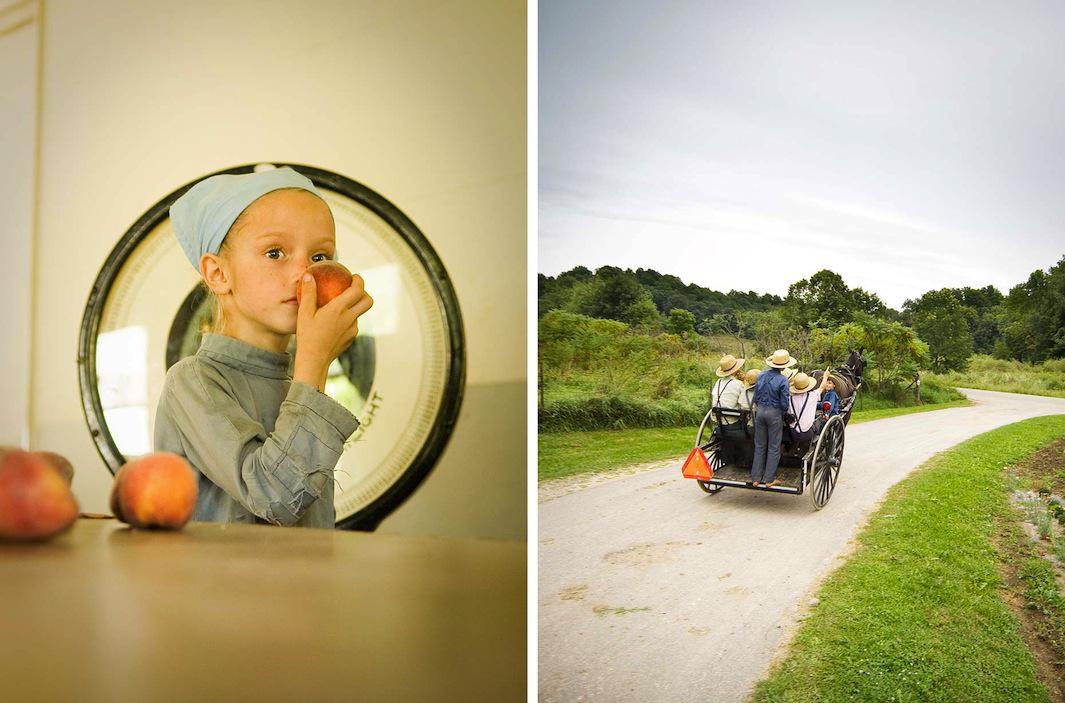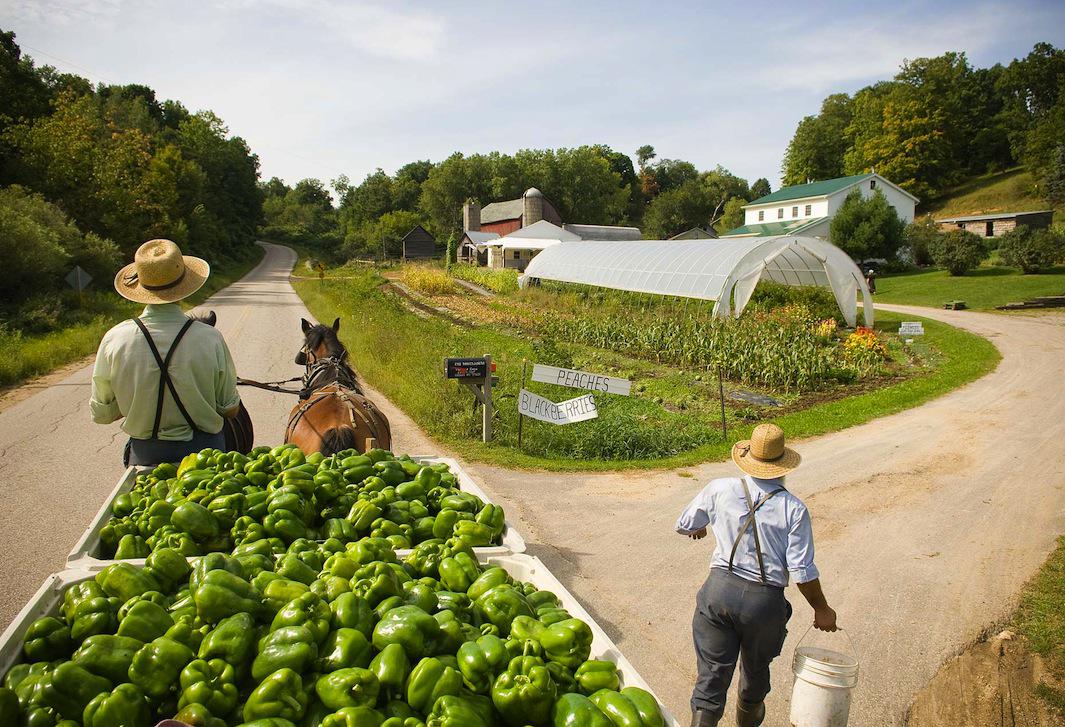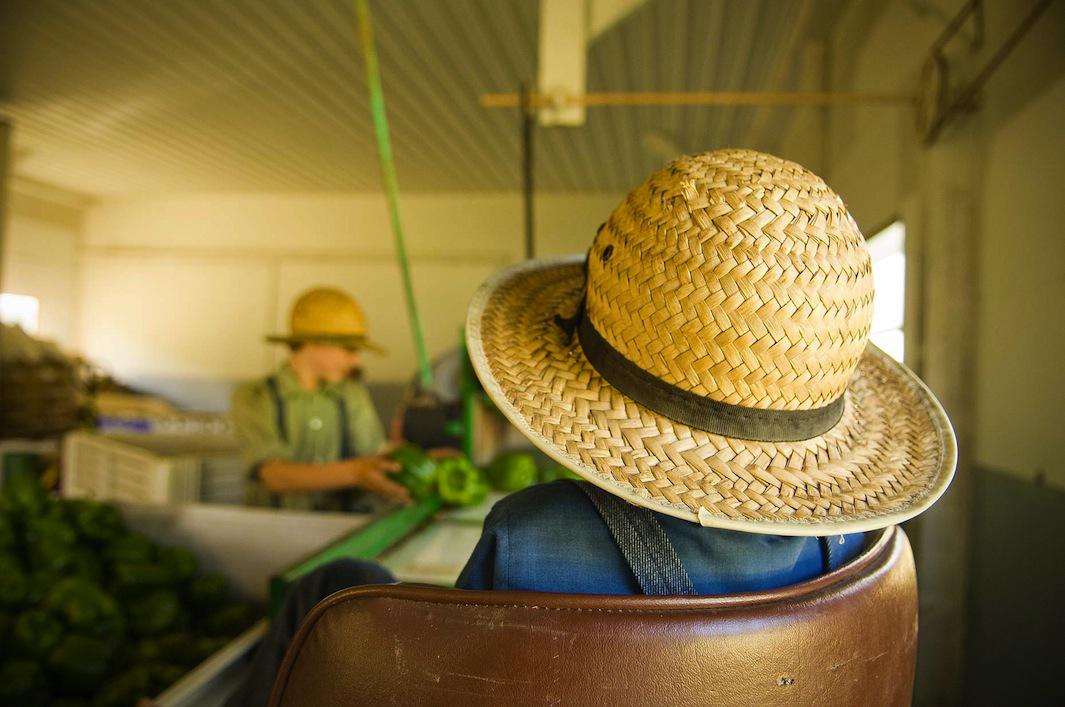How does one photograph a group of people whose beliefs prohibit virtually all photography? David Nevala found out a few summers ago when he arrived in Hillsboro, Wis., on a daylong assignment to photograph an Amish farm for the farm cooperative Organic Valley. “It was like walking into another world. I was trying my hardest not to do anything wrong or make any mistakes or offend someone,” he said.
In observance of the second commandment, which prohibits the making of “graven images,” and also to avoid vanity, most Amish will not pose for photographs. Other Amish will refuse to appear in photographs under any circumstances. Under the terms of Nevala’s assignment, he was allowed to roam the farm and photograph whatever he liked, but the photos that could be distributed ultimately required approval of the farm’s patriarch. “It’s not that it wasn’t welcoming. There was just such a tension around the photographs. A lot of the anxiety I brought on myself, just trying to make sure I was being respectful and overly accommodating. I’m not one of those photojournalists who can drop into any zone and just snap away regardless of how people are reacting. I tend to feed off the energy of the subjects,” he said.
Nevala’s job ultimately became easier when the children on the farm started to take an interest in him. The restrictions on children being photographed, Nevala found, were looser, so he felt free to snap away as they played in their tree house and raced on wagons. “I think a lot of what they were doing was showing off. They were hamming,” Nevala said.



Keeping in mind his agreement with the patriarch, Nevala said he still shot defensively, trying to avoid capturing faces as much as possible. Ultimately, Nevala said he was able to capture the Amish to his liking without breaking the rules. “The thing is, what they wear is such an indicator, you don’t even have to see faces. You already know when you see the straw hats on the boys or the bonnets or traditional dresses on girls,” Nevala said.
Nevala had never had any interactions with the Amish previously, and he said his time on the farm was instructive. He was impressed by the work ethic there and interested in stepping into an entirely different lifestyle. Still though, when it came time for the patriarch to review the photographs, Nevala said he was nervous.
Ultimately, the patriarch chose enough of the photographs to please Nevala’s client, and the farmers liked him enough that Nevala has returned since his assignment. “This particular farm I was on, it’s six miles down the road from a cabin I built. I ended up going back and hiring one of the kids to work on our milling crew. I’ve continued a bit of a relationship with them,” he said.
Nevala is currently working on a series of portraits of farmers, as well as a video project called “The Ways” about native communities around the central Great Lakes.





